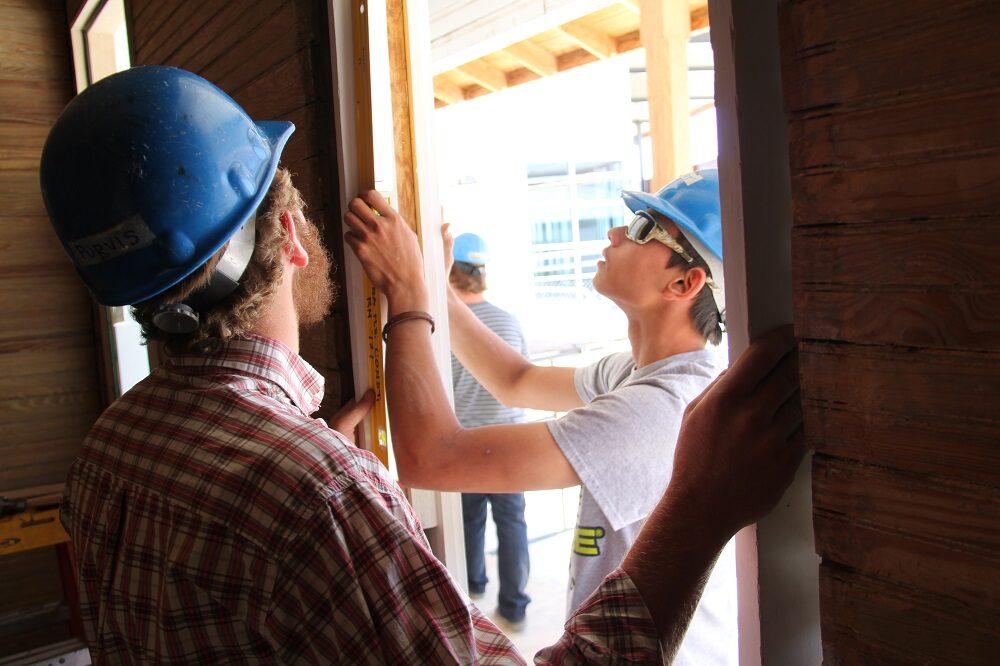Arizona leaders are taking the best ideas from around the world in career and technical education to help more young people succeed, said Bill Symonds, director of Arizona State University’s Global Pathways Institute.
“It is critical to the economic future of Arizona to have a robust and health career and technical education system,” said Jeramy Plumb, superintendent of Mountain Institute JTED in Yavapai County. “It is well documented that large employers choose to build and expand their companies in regions with strong educational systems that are poised to provide the highly trained and certified workforce that they will need to sustain and grow into the future.”

Photo courtesy Mountain Institute Joint Technical Education District
In May, business, education, government and philanthropic leaders from Arizona, Colorado, Nevada, Utah and New Mexico including Gov. Doug Ducey, and ASU president Michael Crow shared their ideas and what’s worked well and developed a call to action during the Southwest Pathways regional conference held in Phoenix and hosted by Global Pathways Institute.
The institute, launched in June 2014 and led by Symonds, the primary author of the Pathways to Prosperity report, aims to prepare youth with multiple pathways to success and engage employers in these pathways.
Two weeks ago, Symonds shared that action plan with Arizona educators at the Association for Career and Technical Education of Arizona and Arizona Department of Education’s “CTE: A Revolution in Education” conference in Tucson.

Bill Symonds, director of Arizona State University’s Global Pathways Institute
Now, a team led by Dr. Sybil Francis, executive director of the Center for the Future of Arizona, and Glenn Hamer, CEO of the Arizona Chamber of Commerce, are working on ways to implement those ideas, Symonds said.
“What we’re talking about is how can we create an education system that’s really going to restore the American Dream for far more students in the state of Arizona and what do we need to do that?” Symonds said.
Career and technical education is an important part of that, Symonds said.
When Arizona’s first Joint Technical Education District – East Valley Institute of Technology – was developed, it was formed on the Oklahoma and Ohio models, which provide multiple districts the ability and opportunity to participate in career and technical education, said Diane McCarthy, director business partnerships, government, public policy and legislation for West-MEC.
“In Arizona, it really is a statewide movement,” McCarthy said.
It provides the opportunity for every student to explore career and technical education in his or her own high school campus and to apply for JTED central campus programs which they would attend in the afternoon, McCarthy said.
EVIT’s Sally Downey: ‘Not all programs labeled as CTE are the same’
Part 1: Can AZ lead in career and technical education education despite millions in cuts?
Part 2: AZ budget cuts reduce career and technical education funding by 53 percent
“Career and Technical Education programs provide the foundation for a strong educational system, preparing both highly skilled entry level employees as well as feeding technically skilled youth into the post-secondary education systems where they can obtain advanced degrees and certifications in a shorter time frame,” Plumb said.
Business and industry will lead the effort to make this happen for Arizona, Plumb said.
“They will lead the charge to apply pressure at the legislative and executive branches of State Government to ensure a bright economic future for Arizona,” Plumb said.
How should career and technical education in Arizona evolve?
“The Arizona Department of Education, for example, could create a CTE pathway to the high school diploma,” Symonds said. “Right now you need 22 credits to graduate, seven of those are electives and they could combine those together to create a CTE pathway and make that more available for students.”
That would most likely increase the number of students who graduate in Arizona with an industry recognized credential, Symonds said.
“In Florida for example, more than half of high school students graduate with an industry recognized credential. In Arizona, it’s less than 10 percent,” Symonds said.
The widely-held belief that everyone should go to a four-year college greatly diminishes the value of career and technical education and Arizona’s strong community college system, Symonds said.
“We saw this this past year, because the legislature made some very deep cuts in funding for JTEDs,” Symonds said. “They also eliminated all funding for Maricopa Community Colleges, which is the nation’s third largest community college.”

Students in the construction technologies program at Pima County Joint Technical Education District hone their skills while working on a project. Photo courtesy Pima County JTED
There’s a basic misconception about the kind of education people need to succeed, Symonds said.
“By 2018, we’re going to have 3 million jobs and 61 percent of those are going to require education beyond high school, but only 26 percent will require a four-year degree or higher,” Symonds said.
Three out of four jobs in Arizona do not require a four-year degree, and many of these careers provide a middle-class standard of living, Symonds said.
“You may not need a four-year degree to do the job faster, get out in the field quicker and not take on so much debt,” Symonds said. “There’s a lot of advantages to that.”
Plumb said, “We continue to work at changing the paradigm that all students need a four year post-secondary degree.”
“Although we have begun to see a change on the national level, most secondary educators and administratiors in Arizona fail to see the value of CTE/JTED programs as critical to the comprehensive high school education,” Plumb said. “We must continue to educate students, parents, and school teachers and administrators about CTE and JTED programming, and perhaps more importantly the current needs of business and industry.”
To focus on student’s success after high school and postsecondary education, the Global Pathways Institute, educators and business leaders advocate the following three strategies.
- Increase career literacy. Equipping students with more knowledge and support to help them make good career decisions going forward. The Arizona’s Education and Career Action Plan approved in February 2008 by the State Board of Education is a good start, Symonds said.
- Focus on multiple pathways to success. Give all students more than one way to succeed. For some an academic pathway makes a lot of sense, for others getting involved in a JTED would likely increase their engagement.
- Extend work-based learning. The recently formed Arizona Career Leadership Network is led by the Arizona Department of Education and includes business leaders and higher education leaders who are focusing on how to develop a better model to improve the situation in Arizona.
At the Southwest Pathways conference, several youth talked about how their lives were improved through career and technical education.

Students in the medical assistant program at Pima County Joint Technical Education District practice medical procedures. Photo courtesy Pima County JTED
Stephanie Ly, who earned her certified nursing assistant certificate from Pima County JTED, said that led to a job at a local hospital, and the hospital offered to help pay for her bachelor’s degree, Symonds said.
“They paid for 75 percent of the cost of her bachelor’s degree,” Symonds said. “Instead of taking on a massive amount of debt that might have taken years to pay off, she found a better pathway.”
Work-based learning includes not just job fairs, workplace tours and job shadowing but also mentoring, internships and apprenticeships, Symonds said.
“The reason why work-based learning is important is that it really does raise student engagement. If you’re in an internship, it’s a lot more interesting than class,” Symonds said. “Students get a lot more passionate and determine if they want to go into that field – if it appeals to them. If they do, it’s a great way to learn about what are the best pathways to succeed in that industry.”
Global Pathways Initiative will launch a pilot program this fall in Phoenix Union High School District using these strategies to show what a difference they can make, Symonds said.
It’s important to remember that career and technical education is a driver for economic development, said Dr. John Mulcahy, director of professional development for West-MEC and past president of Association for Career and Technical Education of Arizona.
“Without human capital no other capital investment can work. We know that in all businesses, personnel are key,” Mulcahy said. “CTE can provide employers with skilled employees. Employees who not only possess technical skills, but who possess all the requisite soft skills as well.”
This is the last story in the three-part series.
For more on career and technical education in Arizona, please read AZEdNews’ special report:
Part 1: Can AZ lead in career and technical education education despite millions in cuts?
Part 2: AZ budget cuts reduce career and technical education funding by 53 percent
EVIT’s Sally Downey: ‘Not all programs labeled as CTE are the same’










